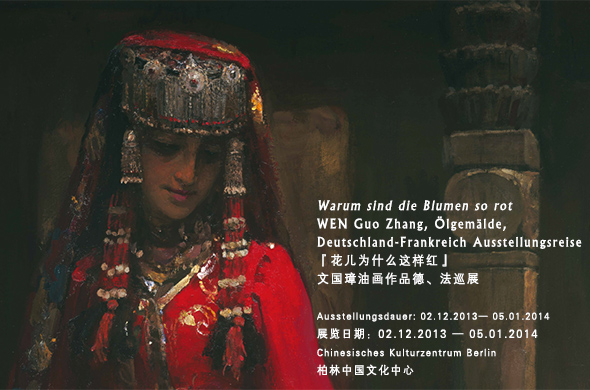
I studied in Wu Zuoren Studio in the Department of Oil Painting, CAFA, which marked the influence on CAFA by the Nordic School. The most important core artistic proposition of the studio was to perform the true temperament by using art. I felt lucky that I was able to learn from the masters, and representative artists in the development of the history of European painting in such an environment. I really admired three masters: Rembrandt, Delacroix and Courbet, especially Delacroix. I fell for the color of Delacroix, his painting skill, and expression of true temperament.
I didn’t only repeatedly read a variety of albums of Delacroix in the library, but also read the books and articles on introduction of him, including “Delacroix’s Diary”. In his paintings, the strong dramatic conflicts, as well as his ability to create an atmospheric arousing mood, which is beyond the imagination of ordinary people, are the most attractive to me, his painting reveals an abnormal strong painting skill. I have gone to Europe six times since I initially went to Paris at the end of 1989, and I went to visit the “Massacre at Chios” by Delacroix every time. I made a conclusion of his works: the painting skill originated from the sincerity of the artist. He had convincingly and rigorously shaped the three groups of subject figures, it is the perfected, rigorous and rare appearance of any other emotional and bold paintings by the Romantic master! But he paid no heed to some parts which show the contrast of the strong and weak, blurring and clear, for example, in the left lower corner of “Massacre at Chios” there are images of two hugging figures, only with a few improper brushes, and even being difficult for people to believe it is a master’s work, but few people criticize such an “error”! It seems that Delacroix was more free than David, because he didn’t have to please anyone, nor sell a completed work to earn money. Delacroix did not want to pay attention to everything concerted in his paintings, which is the tolerance of a true artist!
I finally found Tajik in 1983, a piece of pure land excited me, which is my ideal, my dream. My subject of Tajik in Pamir has experienced several stages from the surface to the in-depth: exploration of form – performance and decorative: portrait – painting skill in figure painting, including exploration of technique; large scale creation – Hold a Lamb in the Mouth series and Bride series; Search for the Princess Tajik series – goes deeply into the culture of Tajik, a combination of legend and reality. I hope that through the Search for the Princess Tajik series, I will complete one or two creations to generalize the images of several princesses of the old Tajik legends: such as “Princess Sahipjamal” and “Gülbita”. I have gone to Europe annually for several years, to visit the art museums, learning the techniques from oil painting masters. It is one of the fulcrums, while another one is Tajik. “How Red the Flower is” – the subject of the touring exhibitions in four German and French cities, I am going to introduce the Tajik ethnic group in the Pamir Mountains, an adorable mountain ethnic group, to the European audiences. It pays a tribute to the European tradition of oil painting, Delacroix, and offering my thanks to my alma mater.
In addition, I will share part of the small paintings of landscape, completed during my visits in Europe, including France, UK, Italy, the Netherlands, Belgium, Germany, Denmark, Spain, Russia, etc., over the 23 years.
Excerpts from “My Dream of Delacroix”
Wen Guozhang wrote in Beijing in 2013
About the exhibition
Title: “How Red the Flower is!” Wen Guozhang’s Oil Painting Touring Exhibitions in Germany and France
Duration: December 2, 2013 - January 5, 2014
Courtesy of the artist, translated by Chen Peihua and edited by Sue/CAFA ART INFO.




























